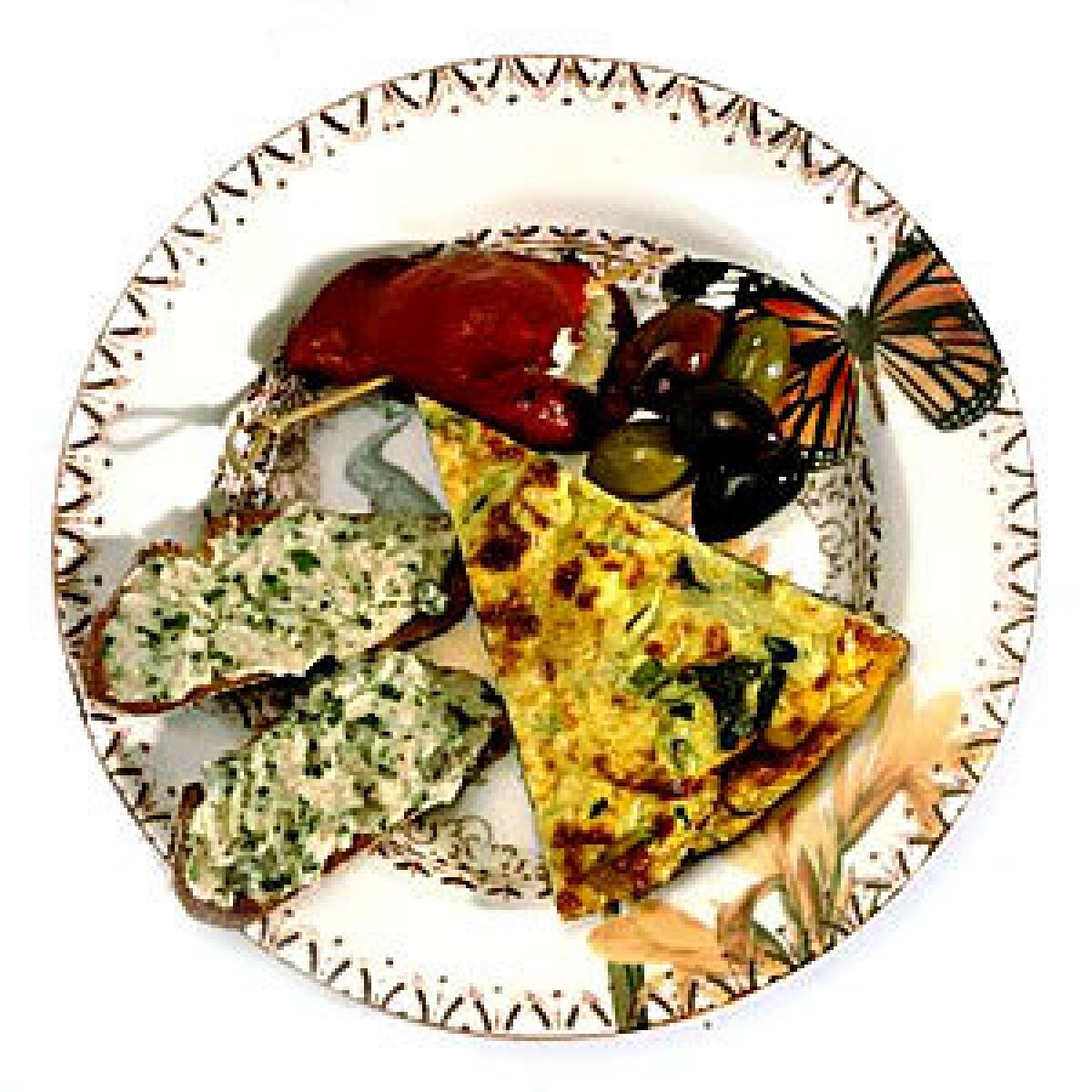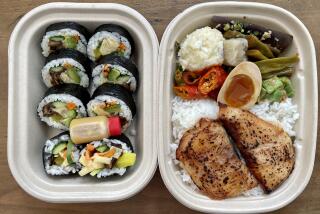Almost-instant appetizers using pantry basics

AN AMAZING variety of small bites can be put together quickly and on short notice if you keep some basics in your pantry and refrigerator. Stock up on harder-to-find ingredients at occasional trips to specialty food stores. Though most of these items can be found at mainstream groceries, for food lovers this would be a wonderful excuse for a field trip to a couple of slightly out-of-the-way treasures.
For Italian products, visit Santa Monica’s Guidi Marcello at 1649 10th St., (310) 452-6277, in a small industrial park accessible only from Olympic Boulevard. For Spanish goods, head to Harbor City’s La Española Meats, just off the Harbor Freeway at 25020 Doble Ave., (310) 539-0455.
Here’s a guide to stocking an entertaining-friendly kitchen cupboard:
Anchovies. The harsh, fishy taste you may associate with anchovies is prevalent with cheap ones; good anchovies have a flavor that is subtle but remarkable and lend a distinctly meaty, slightly briny undertone to all sorts of dishes. There are good anchovies packed in olive oil, but the very best are salted -- soak them in water for five minutes or so to remove the salt and then pat them dry. The only drawback to salted anchovies is that they usually come in huge 2-pound cans. Once they’re opened, though, just transfer them to another container and keep them topped off with salt and olive oil. They’ll store forever in the refrigerator.
Canned beans. Just as they are, cannellini and garbanzo beans make acceptable ingredients for salads. But they’re most valuable to the antipasto cook when ground to a paste to make a smooth, rich, faintly earthy base for bruschetta and crostini. Rinse them well before using to get rid of the canned flavor.
Canned fish. Look for tuna from Spain, Italy or Portugal that has been cut in large, meaty pieces (they’ll usually be labeled as fillets rather than chunks) and preserved in good quality olive oil. Ventresca is especially rich meat cut from the tuna belly. Don’t overlook other high-quality canned fish as well, such as sardines or Spanish specialties such as squid (calamares or chipirones) and razor clams (navajas).
Capers. Preserved in vinegar brine, these add to dishes a tangy, salty note that is quite pleasant. But buy capers preserved in salt and you’re in for a real treat. The flavor is so much more complex, with lovely floral flavor notes. Just soak them briefly before using to get rid of the salt.
Dried sausage. Choose the smallest in circumference you can find -- they’ll be naturally drier and harder and are intended for longer storage. Plus, when sausages are that small, it’s not necessary that they be served paper-thin, a real plus for those of us who don’t own a deli-style meat slicer. Sliced sausages, prosciutto and other hams should always be bought the day you’re going to serve them so there’s no chance they’ll dry out.
Dry cheese. Like you really needed to be told: A refrigerator without a chunk of Parmigiano-Reggiano might as well be empty. For cooking, though, Grana Padano is just as good. And you ought to have pecorino Romano as well: Its sharp sheep’s-milk flavor goes really well with the garlic/caper/olive flavors so common in antipasti.
Nuts. Not only do almonds make an almost instant appetizer, but they’re also a terrific ingredient. And don’t overlook pine nuts. They can be used as a garnish or they can be ground, lending body, sweetness and their faint bitterness to all kinds of seasoning pastes. Look for pine nuts that have already been toasted. Because of their high oil content, all nuts should be stored in the freezer to delay rancidity.
Olives. Whether black or green, brine-cured olives are the most flexible as they can be ground into pastes such as tapenade, or seasoned to your taste and stored.
Piquillo peppers. These are squat, heart-shaped Spanish bell peppers that are usually found in cans and preserved in brine, not vinegar. The best carry a geographical appellation from the district of Navarro, but there are very good ones from outside the area. Just make sure they’ve been fire-roasted before peeling -- it’ll say so on the can.
Prepared mayonnaise. If you don’t make your own, have a good-quality prepared mayonnaise on hand. Best Foods brand comes very close to the best homemade.
More to Read
Sign up for our L.A. Times Plants newsletter
At the start of each month, get a roundup of upcoming plant-related activities and events in Southern California, along with links to tips and articles you may have missed.
You may occasionally receive promotional content from the Los Angeles Times.







